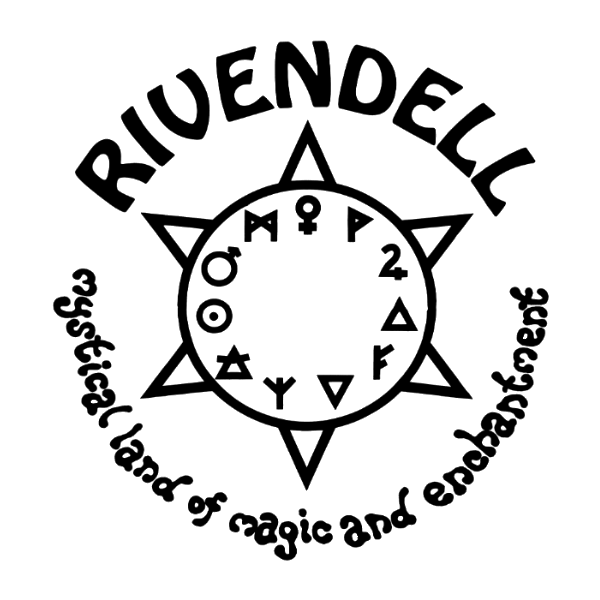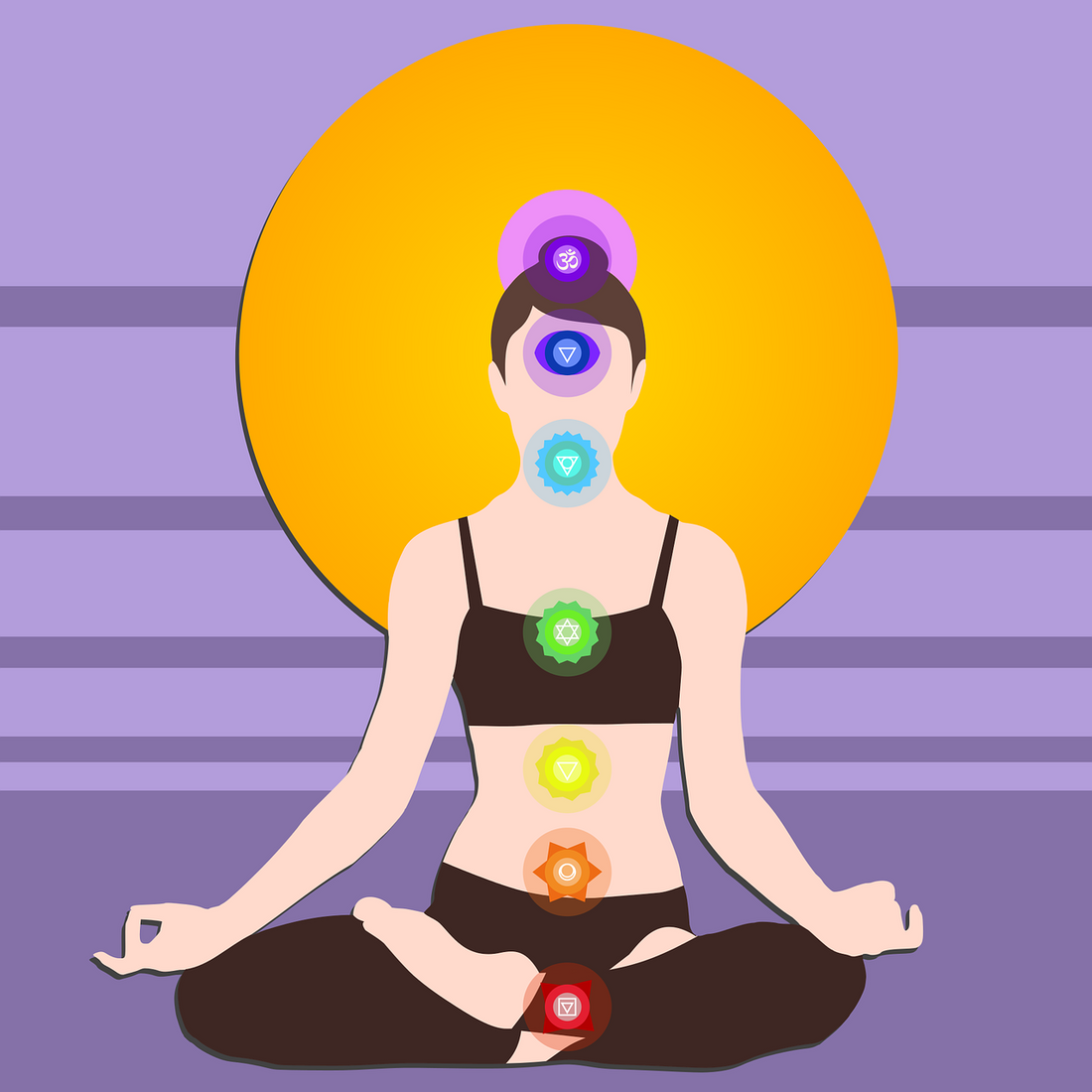Firstly, the term ‘chakra’ is an ancient Sanskrit word meaning ‘wheel’. Each of the 7 chakras make up part of the overall wheel that is your life force, your spiritual energy, and if one chakra centre is spinning too fast or too slow, it can unbalance your entire life force.
Once you know what each chakra is and does, you’ll be able to become more aware of any blockages or unevenness you might have, and you can look to restore the balance.
Chakra 1 - Root Chakra (or Muladhara)
Sitting at the very base of your spine (the red symbol in the image above), the root chakra represents our foundation. The role of this chakra is based on survival - it aims to give you everything you need to survive, including financial and emotional security.
When this chakra is open and flowing, we are confident to stand on our own two feet and we feel safe and secure. When it is closed or blocked, we may feel as though we are on shaky ground with a high sense of insecurity.
Colour: Red
Stone: Hematite
Chakra 2 - Sacral Chakra (or Swadhisthana)
The Sacral Chakra can be located in your lower abdomen, right below your belly button (see the orange symbol). This chakra is all about your creative energy and identity as a human being, focusing on pleasure and intimacy.
An open Sacral Chakra will see you enjoying all of the pleasurable things life has to offer, whilst a blocked one may make you feel as though you are lacking control in your life.
Colour: Orange
Stone: Tiger’s Eye
Chakra 3 - Solar Plexus Chakra (or Manipura)
Also known as the ‘warrior’ chakra, the third chakra is found in the upper abdomen, closer to the stomach (the yellow symbol). This chakra is all about your self-worth and your natural instincts - you know the term ‘gut’ feeling? Well that of course is a reference to where this chakra sits in your body.
When your Solar Plexus Chakra is working harmoniously, you’ll feel confident in your own instincts and your ability to express yourself well. If it’s blocked, that’s when the self-doubt and uncertainty creep in so it’s important to keep this one well-oiled!
Colour: Yellow
Stone: Amber
Chakra 4: Heart Chakra (or Anahata)
The Heart Chakra is exactly where you think it is, right in the centre of your chest, just over your heart (the green symbol in the image). This chakra is fairly easy to interpret, given its name - it’s all about love, compassion and kindness.
If your Heart Chakra is in balance, you’ll find it easy to feel love for yourself and others and to find kindness in tough times. If it’s out of sync, it’ll be tough to open up to people and experience empathy for yourself and others.
Colour: Green
Stone: Rose Quartz
Chakra 5: Throat Chakra (or Vishuddha)
Again, this chakra is located in the obvious place, your throat (the light blue symbol). Its role is to help you with your communication and self-expression, and it also allows you to speak your thoughts clearly and truthfully.
If your Throat Chakra is open, you’ll feel free to express yourself in a clear and honest manner, and your words will inspire those around you. If blocked, your Throat Chakra will have you finding it difficult to find the right words to express yourself and you’ll have trouble with communication overall.
Colour: Turquoise
Stone: Aquamarine
Chakra 6: Third-Eye Chakra (or Ajna)
You might know, or have heard about, your ‘third-eye’, and this chakra is situated right where that would be, between your eyes (the dark blue symbol). The entire concept of your ‘third-eye’ and the Third-Eye Chakra is based on your ability to connect with your intuition and see the bigger picture of the universe in all its wisdom.
If your Third-Eye Chakra is in balance, you might experience visions and strong intuitive feelings, and you’ll feel at one with your spiritual self. If this chakra is closed, you’ll find it hard to feel a sense of connection with your spirit and you won’t experience the true beauty of all that this chakra has to offer.
Colour: Indigo
Stone: Amethyst
Chakra 7: Crown Chakra (or Samsara/Sahasrara)
The seventh chakra sits at the crown of the head (the purple symbol in the image above) and is a representation of each of our own pure consciousnesses. Not many people at all have experienced the balance of this particular chakra as it is almost like reaching a state of nirvana, the end-goal of Buddhism.
When your Crown Chakra is balanced, you’ll have reached the goal of every spiritual seeker, and whilst we’ve said it isn’t easy to achieve, trying to balance it out as best you can will help you to become happier and healthier and will also help to align your other chakras.
Colour: Violet
Stone: Clear Quartz
So that’s the general gist of chakras and how each of them helps you to become more spiritually enlightened and live a better life. As each chakra has a colour and stone related to it, we’ll explore the meaning of these more in depth later, but for now, if you think there’s one you’d particularly like to work on, try wearing its colour or working with its stone and see how you go!

